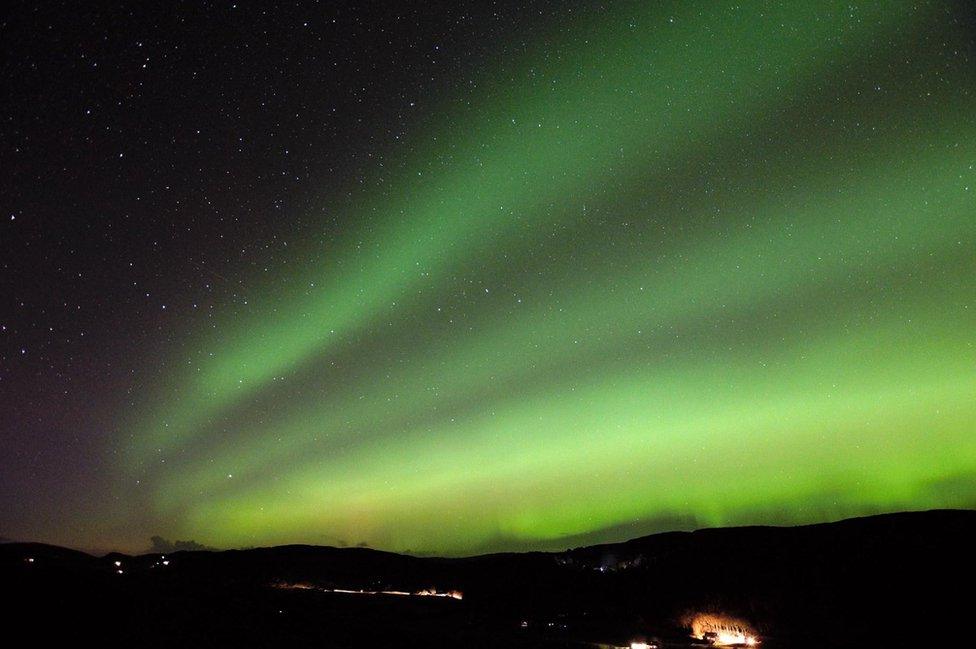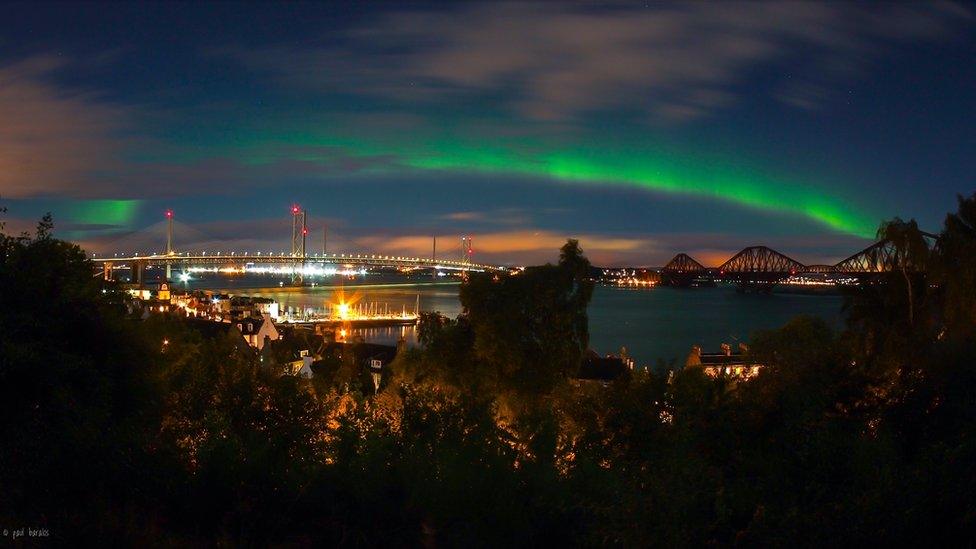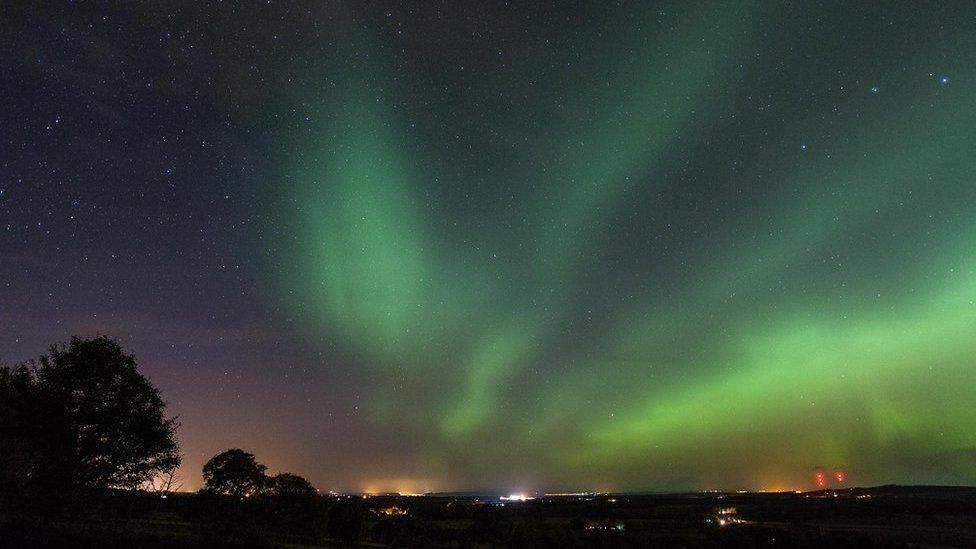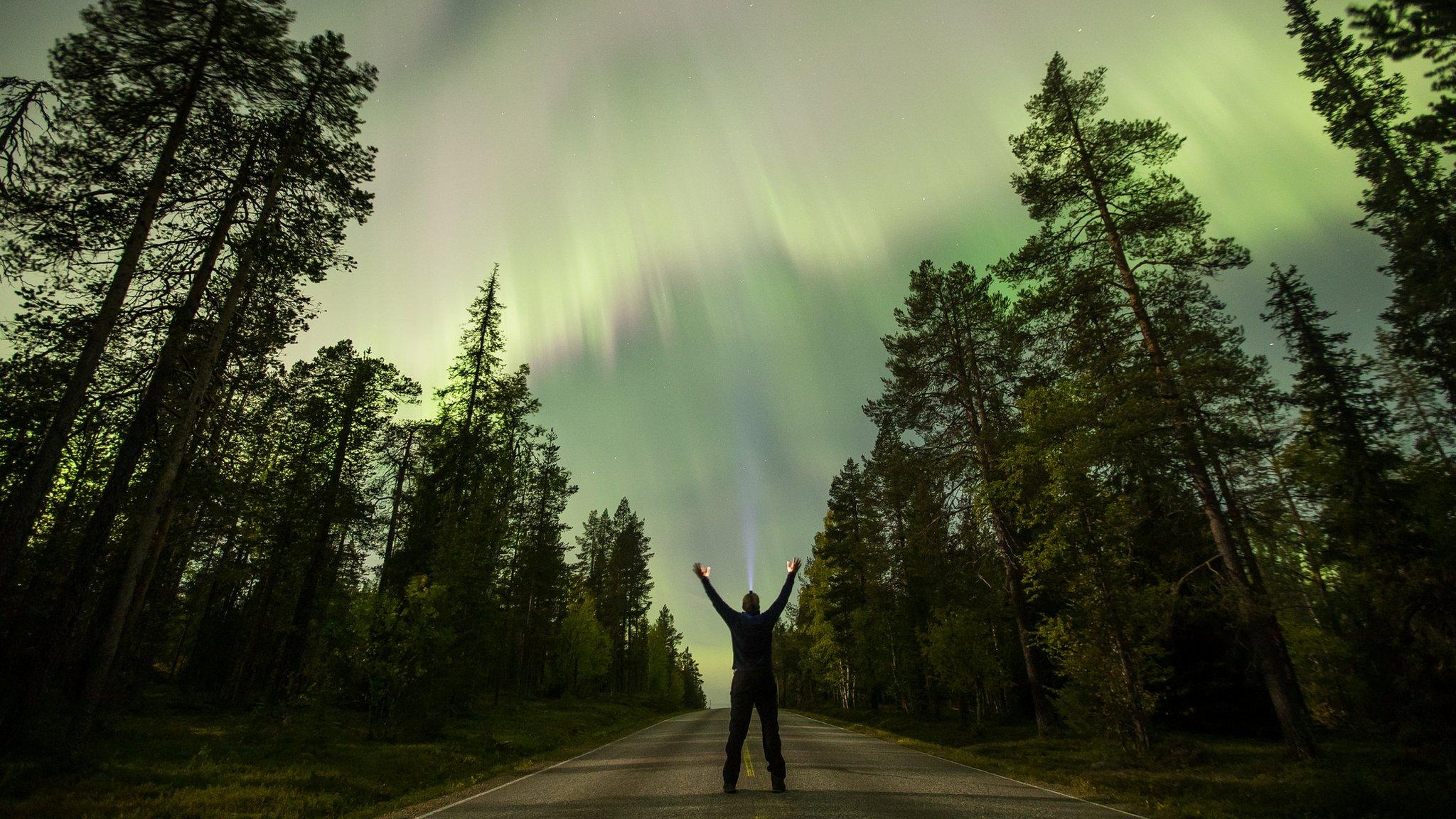Aurora borealis over Scotland captured from space
- Published

The image captured by Randy Bresnik from space
Scotland is well known for its spectacular views. But those views may be even more stunning from space.
A Nasa astronaut captured the aurora over Scotland from the international space station.
Randy Bresnik is the commander of the international space station and has been an astronaut for over 10 years.
The 50-year-old from Kentucky was an officer in the US marine corps before joining Nasa.
Allow X content?
This article contains content provided by X. We ask for your permission before anything is loaded, as they may be using cookies and other technologies. You may want to read X’s cookie policy, external and privacy policy, external before accepting. To view this content choose ‘accept and continue’.
What is the aurora?
The aurora is a natural light show which occurs when electrically-charged particles from the sun collide with atoms in the earth's atmosphere.
This causes the atoms' electrons to move at a higher energy-state. As they return to their usual state, photons are released which produce light.
The colour of light depends on the type of atom affected. Green light - the most common in the aurora - is produced by oxygen about 60 miles above the earth.
The aurora is most commonly seen in the far north and south near each of the earth's magnetic poles. It is called the aurora borealis in the north (or commonly the northern lights) and aurora australis in the south.

Chris Cogan captured this spectacular streaking pattern in the sky at West Langwell in Sutherland earlier this month
Where can I see it next?
While it is usually clearest in the north, if conditions are right the aurora can be seen in many places across Scotland.
To find out when and where to see it next, keep an eye on Lancaster University's aurora watch UK , external.
There were spectacular displays of the aurora over Scotland earlier this month.

Paul Baralos took this picture showing the Aurora taken above South Queensferry
- Published8 November 2017

- Published8 September 2017

- Published8 September 2017
